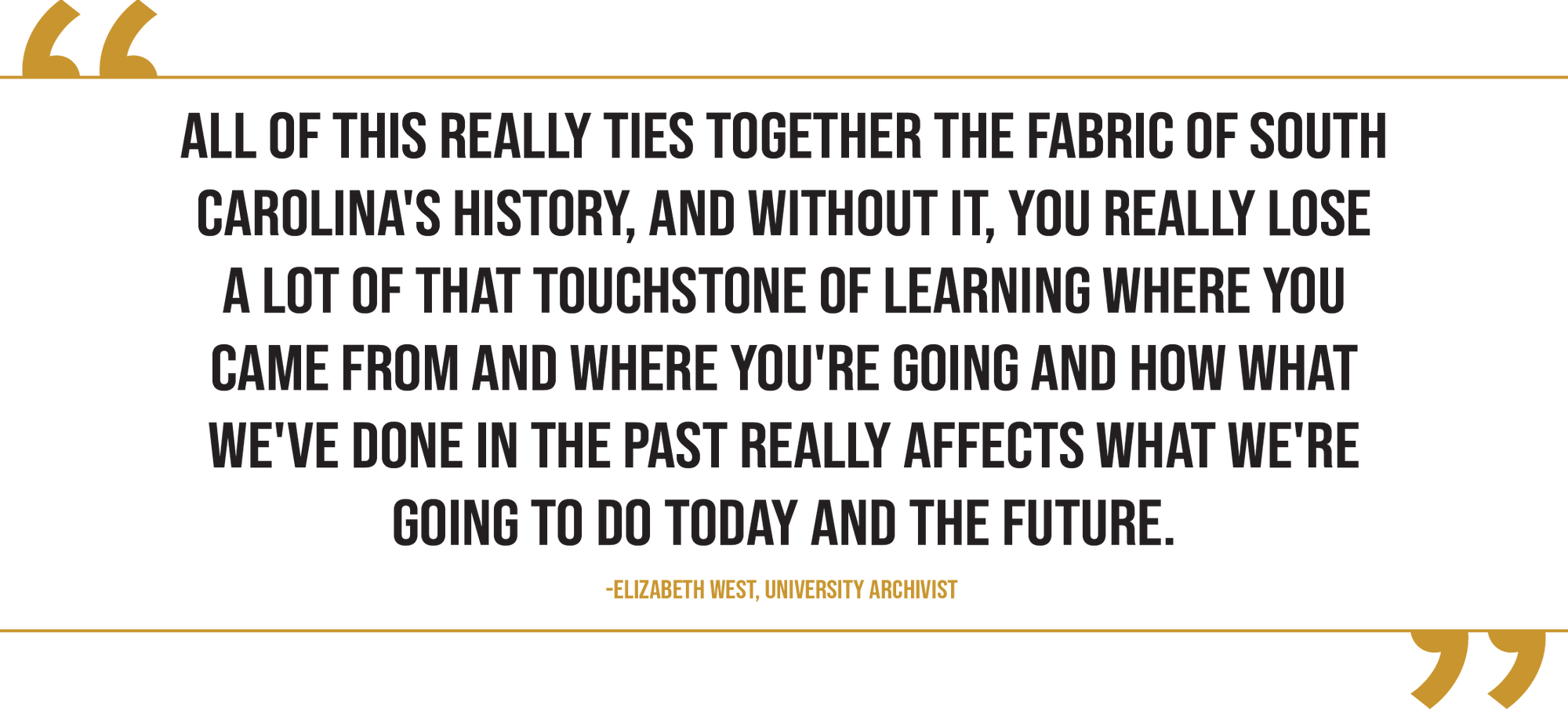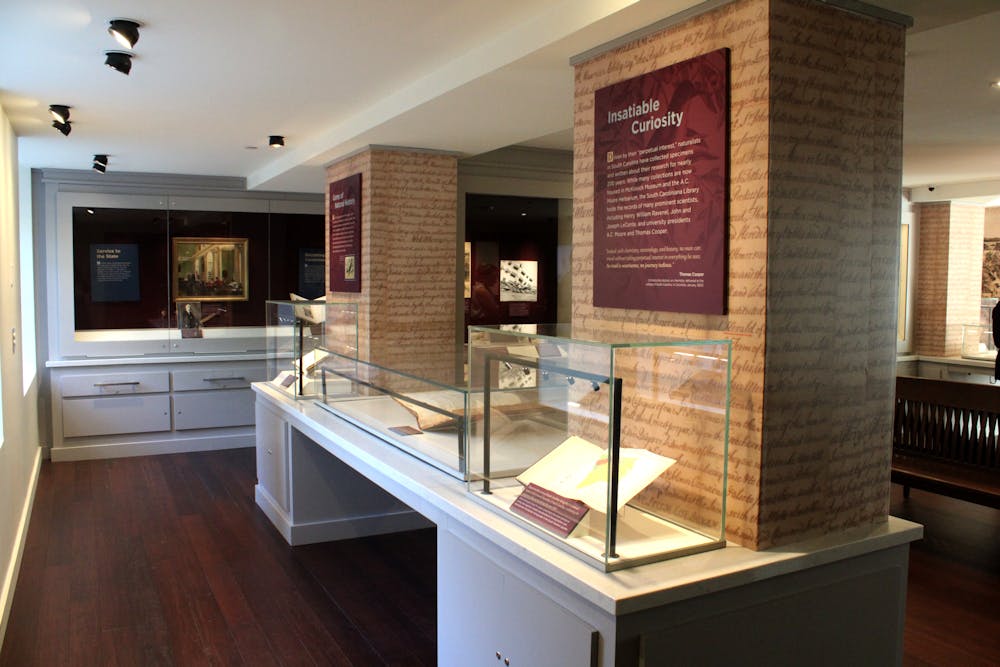The South Caroliniana Library is set to reopen its doors on Oct. 6, and with it, a vast collection of information spanning nearly 400 years will again be available to the public.
The library was originally opened in 1840 at the request of former USC president Robert W. Barnwell . It was designed by the nation's first federal architect and native South Carolinian, Robert Mills, for the price of nearly $24,000.
Classified as the nation’s first freestanding academic library, the South Caroliniana Library is built in the Greek Revival style and stands out from the rest of the buildings on the Horseshoe due to its four white columns, according to a press kit released by the university.
“When this building was completed in 1840, we were the first college and university in America to do so, which makes this the nation's first freestanding academic library. So, it has that sort of landmark status because of the timing and the purpose of its construction,” university archivist Elizabeth West said.
With the conclusion of renovations that started in 2017, the library is once again home to an array of historical documents and visual works.
Included in the collection is Samuel Wilson's “An Account of the Province of Carolina in America," which was published in 1682 and is one of the earliest descriptions of the Carolina colony, as well as personal papers from various South Carolina Revolutionary War heroes, such as Henry Laurens, Francis Marion and Thomas Sumter.
The library has more recent documents in its possession, as well, including records of the Federal Writers’ Project in South Carolina, which was a project of the Works Progress Administration in the 1930s that aimed to support writers and artists who were documenting the nation’s history.
It also holds papers and photographs of John Henry McCray, a civil rights activist and publisher of South Carolina's largest African American newspaper, the Lighthouse and Informer, among a selection spanning several disciplines.
“We've got old, handwritten chemistry textbooks or journals from a professor or doctor of chemistry. We've partnered with the herbarium to photograph some of the specimens that are folded up inside our manuscript volumes. We have sheet music, we have medical and sciences, some math, literature by South Carolinians about South Carolina, so there's a lot for everybody,” library specialist Nicholas Doyle said.
In addition to various written works, the South Caroliniana Library also contains an extensive visual image collection, whichconsists of photographs, postcards, engravings, lithographs, artwork, architectural and landscape drawings and a compilation of maps dating back to the 1500s, according to the university.
The South Caroliniana Library served as the university’s main library for 100 years before becoming a special collections library in 1940 with the opening of a new library in what is now the McKissick Museum. At that point, the library's mission shifted to being "dedicated to acquiring, preserving and making available a growing collection of South Carolina and American history."
The staff of the South Caroliniana Library said that in that role, the library is important for the university as well as the state.
“All of this really ties together the fabric of South Carolina's history, and without it, you really lose a lot of that touchstone of learning where you came from and where you're going and how what we've done in the past really affects what we're going to do today and the future,” West said.

With a renovation that was prolonged by the COVID-19 pandemic, the impact of the library's reopening is not only felt by those at the university, but also from the surrounding Columbia community, according to Robin Waites, the executive director of Historic Columbia.
“Its rehabilitation builds on the university’s commitment to retain and revitalize the places that define our collective past and to utilize them for a more informed future,” Waites said.
The renovation and subsequent reopening of the library has also garnered notice in the broader Southeast region.
“In addition to saving a building and preserving a collection, this project has transformed and boosted the learning and research environment for scholars, students, private citizens, and all who seek to understand and expand our knowledge of South Carolina, the South and the nation,” Steven Escar Smith, the dean of libraries at the University of Tennessee, Knoxville, said.
Above all, Dean of Libraries David Banush said the hope is that the South Caroliniana Library can continue to catalog the history of USC and South Carolina for years to come.
“We hope this facility will enable us to not only tell the story of the state and the university, but also to engage with our students, faculty and public in a much more engaging and interesting way,” Banush said.

